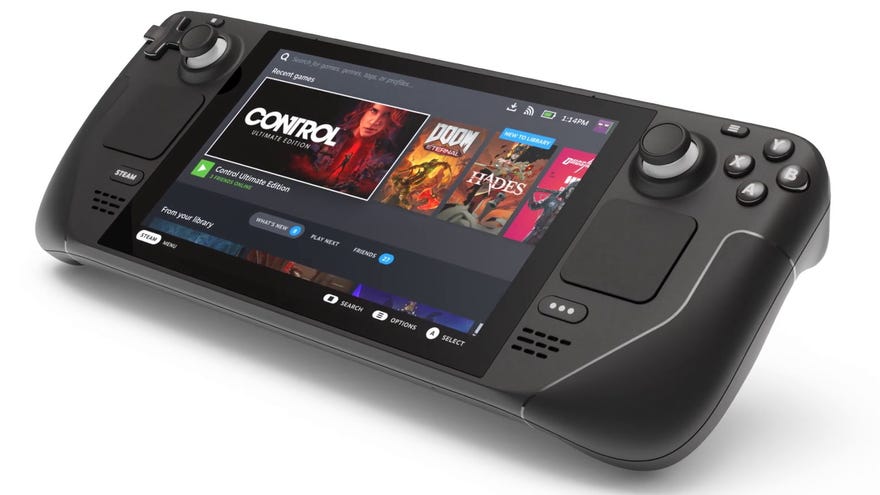"There isn't something secret embedded in the Steam Deck" like the Steam Controller, says Valve
But it will receive plenty of feature updates post-launch
When Valve first released the Steam Controller, it had a hidden, latent gyroscope inside it that Valve switched on later to get it extra hardware functionality. Alas, anyone hoping for similar technological surprises inside their upcoming portable Steam Deck PC are going to be disappointed, as Valve designer Greg Coomer has assured me there "isn't something secret embedded in the Steam Deck that we're going to turn on later" (if only because it already has a gyro built-in). It will, however, continue to get plenty of additional post-launch updates that will give it new features on the software side, he said, including a bunch of nifty cloud capabilities.
"This device is going to get the same treatment that Steam customers are used to in bringing new features to it well after launch," Coomer tells me. "Launch is just the beginning of what we see as bringing features to customers on this device. So there's a sort of inherent futureproofing that Valve tries to operate with all the time, where customers can expect new functionality and features to arrive on the device during the whole course of its life."
Most of those features will be on the software side, Coomer tells me, with a particular focus on how the Deck interacts with the cloud.
"[The Steam Deck] relies heavily on all the cloud technology that's built into the Steam backend," he says. "Streaming from another PC is a thing this device can do, [and] there are some scenarios where you'd want to do that, like you could avoid installing a game twice and save some battery if you're sitting in the same room as the PC that you're running on... Those scenarios, they work right now, but we're going to ship ways that make those scenarios easier and easier."
This will be good news for anyone hoping to play more demanding games on their Deck, although it does rather run counter to the idea that the Deck is a viable upgrade choice for those looking to replace their current rig. Still, the feature I'm looking forward to the most is its upcoming 'suspend and resume' feature, which will let you seamlessly switch between the Deck and your desktop.
"There are actually multiple ways to do [suspend and resume]," says Coomer. "With a quick save to the cloud, or I could pick up where I left off by streaming from that device if I've got good bandwidth. All those things, again, they already work, but we're going to be shipping updates that target those scenarios and make them as seamless as possible. We'll do a lot of that work before launch, but some of it we're going to keep iterating on after launch, and I think there are many of those features that we will think of once customers have devices in their hands.
Indeed, this kind of seamless device switching was one of the most impressive things about Blade's Shadow cloud gaming service when I tested it a few years ago, and I hope that Valve manage produce a similar experience on the Deck. What I really want from the Deck, though, is to be able to instantly pause and suspend my games when I put it into sleep like my Nintendo Switch. Luckily, Valve are looking into this as well.
It's also possible that Valve will bring new features to the Deck that even they haven't even thought of yet. As fellow Steam Deck designer Lawrence Yang noted during our chat, "We fully expect that a lot of the updates that we will be making to the device, especially from a software standpoint, is once people have these in their hands, we're going to be hearing customer feedback and listening to what people are doing and what they would like to do."
It's all promising stuff, so if there's something you'd like to do with the Deck that currently isn't part of its expected feature set, it's possible Valve might just listen and make it a reality.


